Home Interior Rendering
-
Here are some images of the interior of a home I have been designing modeled in Sketchup 7 and rendered with IDX Renditioner. This is my first attempt at rendering. All of the renders took a lot of adjustment by adding invisible light sources simply to be able to view the darker areas of the view. I wish there was better rendition of reflected light that would give more general illumination to the space. I also had a difficult time getting the glass bowls and vases to render with highlights. This is a work in progress and I am looking forward to rendering other areas of the interior and exterior. Some of these renders took as long as 72 hours to render.
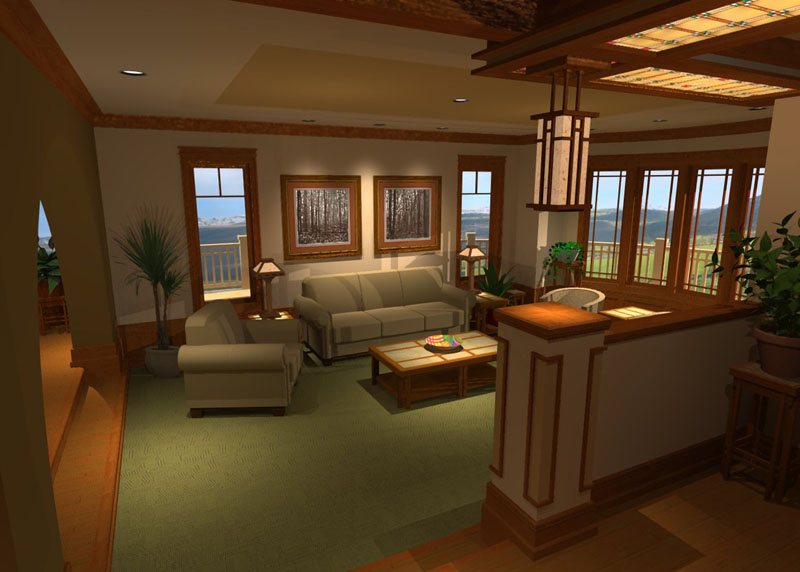
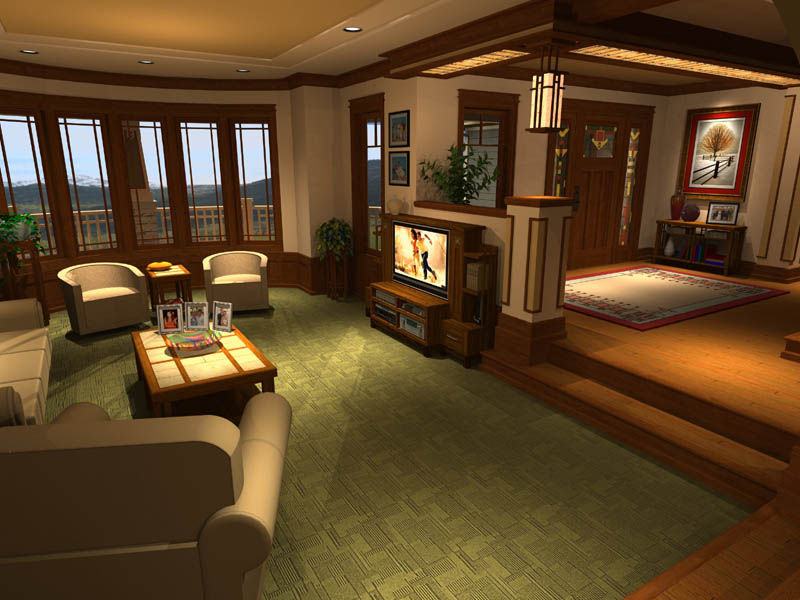
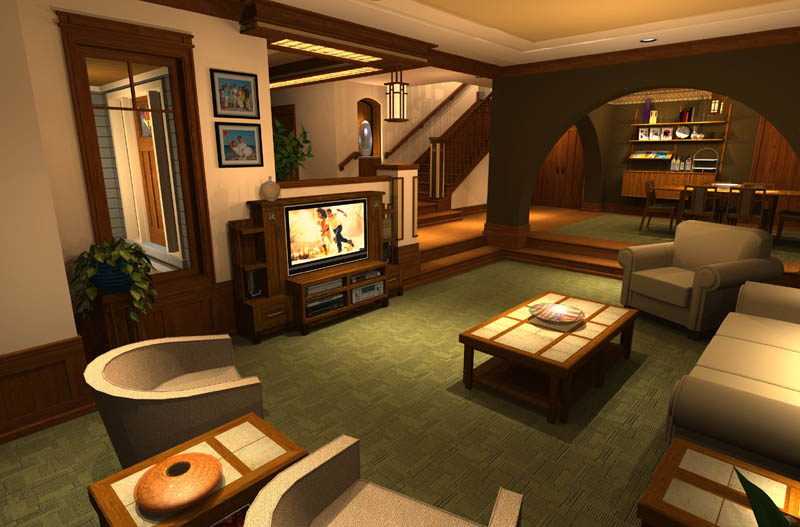
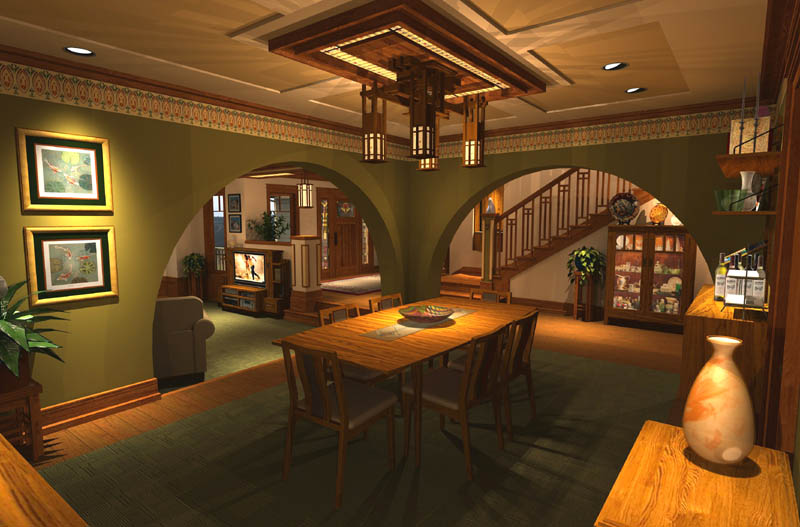
-
Nice renders, did you post process? Can you export and post the SU scenes jpegs to view the layout of invisible lights?
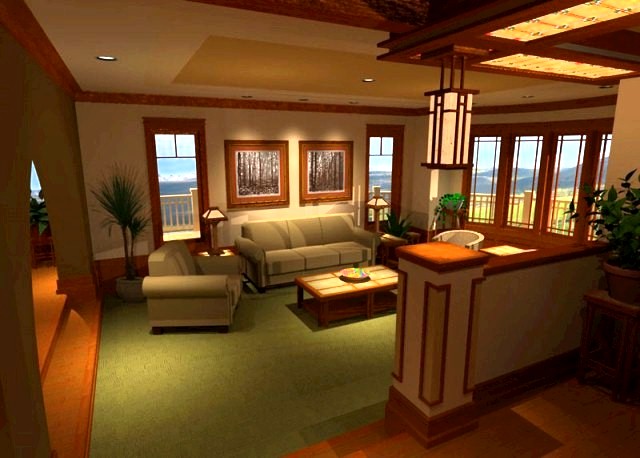
-
Too long for such a quality! You can get better and faster results with say SuPodium or Twilight!
-
I have to agree with dedmin. 72 hours is far too long for little to no reflections and this quality. What are your machine specs? For 72 hours I would hope its a commodore 64!!! I would check out Twilight. For the money it is one of the best render engines for Sketchup in my opinion.
-
I didn't do any post processing. Only reduced the image size to upload it to the forum. I am running on an HP Pavilion with an AMD Athlon (tm) XP 2600 + 2.13 GH2, 1GB of Ram, An ATI Radeon 9550/X1050 Series Graphics Card. One thing I didn't do was to turn off lighting behind the camera that didn't contribute to the specific view.
Thanks for all you comments.
-
I guess everyone's commented on the render time, so I'll say that I really like the design. I'm a big fan of the Arts and Crafts / Mission architecture and style. Nice job!
-
The renderer uses the light behind the camera as it bounces around off the walls in the model. You should be able to select and modify any surface's reflection values by adjusting the renderer's light attribute variables for it. Also the render time is affected by model size and adversely prolonged by over doing the render quality and accuracy settings.
I read somewhere on this forum, that almost all great renders are post processed. Pretty good if this is an early attempt at rendering:-) No chance I can see your invisible light locations? On my system IDX is substantially faster then Podium, but I have not bench-marked the newest release, and I know nothing about Twilight.
-
@dlauch said:
I didn't do any post processing. Only reduced the image size to upload it to the forum. I am running on an HP Pavilion with an AMD Athlon (tm) XP 2600 + 2.13 GH2, 1GB of Ram, An ATI Radeon 9550/X1050 Series Graphics Card. One thing I didn't do was to turn off lighting behind the camera that didn't contribute to the specific view.
Thanks for all you comments.
I certainly agree with the others about a couple of issues.
There're nothing to do with post-pro, AMD or lights behind camera.
What is see is the image being purely raytraced, like what I woud get with POVray which produces higher render time.
So when you change to GI renderer, realism could easily improve due to better light bounce and color bleed and so does render time.
Almost forget...nice modelling, very cosy feel.

-
I too really like the model.
I'm with IDX, so thought I should mention a couple of things to help. The time is horrible. My guess is that 1GB RAM is probably the cause. The renderer works inside SketchUp and is memory intensive, so you were probably disk swapping. If you could get another GB of RAM it would probably help most with not only IDX, but any renderer, and even other apps.
Regarding the lighting, there is another PC build on the IDX forums (here: http://forums.idx-design.com/index.php?topic=623.0) that allows you to control the brightness of the tone mapping. With just a quick move of a slider you can do away with most of the fiddling of the lights.
All that said, again great model, and good renders for someone new at rendering!
William
-
Beautifully done. For what it's worth, one design crit: your Prairie design theme is very rectilinear (the windows, trim, stair rail, light fixtures, art glass...); there's a disconnect between the two dining room arches and the rest of the design.
-
Something about these (I'm guess the Field of View) makes it look like a first person shooter video game. Not sure if IDX supports two point perspective, but the renders could definitely use some straightening of the vertical lines. Looses a lot of realism without it.
I also agree with Honolulu, all great renders (as all great digital photographs) have some post processing done to emphasize or de-emphasize certain features, colors and contrasts. Keep up the good work!
-
For a relatively new comer to rendering I must say i like these renders, they have a certain warmth to them, I like the rich colors and the modeling is great and detailed.
The one thing that I noticed at first inspection was the multi shadows, I'm not sure how to correct that as I have not had much practice lately with IDX, but sure there must be a way to soften the shadows or maybe even uncheck shadows on some lights in order to get a nicer looking result.
As for the time, 72 hours is way too long for any engine, even unbiased IMO, I do not remember IDX being slow, in fact it was in line with most biased engines as far as I remember, so maybe there is something slowing your rig down.
-
IDX can work with 2 point perspectives, but it doesn't soften shadows, or have an option to turn then off for specific light fixtures.
Can someone tell me how other renderers handle multiple shadows from several light fixtures?
-
In Twilight, you have the option to turn off a light's ability to cast shadows, so if there are many lights in a scene, you'd only set one or two to cast shadows.
-
Thanks for all the comments. Since my original post I have been looking into render software that supports global illumination. The frustrating thing with using IDX was not getting bounced light into the darker areas of the room. As a result, I would put ivisible light sources in various locations to try to brighten up the dark areas. Consequently it adds additional shadows. I really like the simplicity of IDX and ease of use, but not supporting global illumination is its major drawback. I have played around with Kerkthea but have found that there is quite a learning curve to it's application. Any other suggestions on good render software that supports Global Illumination?
-
Sorry for the beginners question, but what is "global illumination"? Do you mean a LEM (is this what its called?) like Podium?
-
@honoluludesktop said:
Sorry for the beginners question, but what is "global illumination"? Do you mean a LEM (is this what its called?) like Podium?
GI is the result of indirect light bounces. Direct light rays will travel straight down at the angle of the light source until they come into contact with geometry. If the geometry is opaque by material definition, the rays will stop and cause a subsequent shadow that will project out at the angle the direct light is traveling. This will leave the areas that are in the shadows that aren't receiving direct light to be completely black. By enabling GI in a scene, the render engine will bounce light off of surface to create secondary illumination in the areas not affected by direct light.
I believe most renders today support some level of GI, although some do it a lot better than others.


-
Nice one Earth!
I rem you mentioning a couple of stuffs on LWF ...care to shed some light on the topic?
-
D-space,
There's a ton of info on the web about linear workflow and most of it applies to vray and max. I followed some instructions on setting it up in Max and Vray and definitely noticed a big difference in the shadow detail and texture colors in my renders. The concept has to do with the way the render engine processes light and texture information in linear space, so you want to make adjustments to account for that. In max there is a global gamma override that gets changed so all the textures are processed correctly. There is something I remember about the way most monitors display pixel information at a gamma of 2.2 while render engines process pixel information at a gamma of 1.0. By correcting your textures, there become more physically accurate color information for the renderer to process and thus the final images are more true. I could be off on some of that...I'm just going off of memory. I'm sure a quick search will yield lots more info than would be appropriate for me to share in someone's gallery post.
-
Adam, Thanks, guess all ray tracing renderers do some degree of global illumination, if nothing else as in the process of ray tracing:-)
Advertisement







